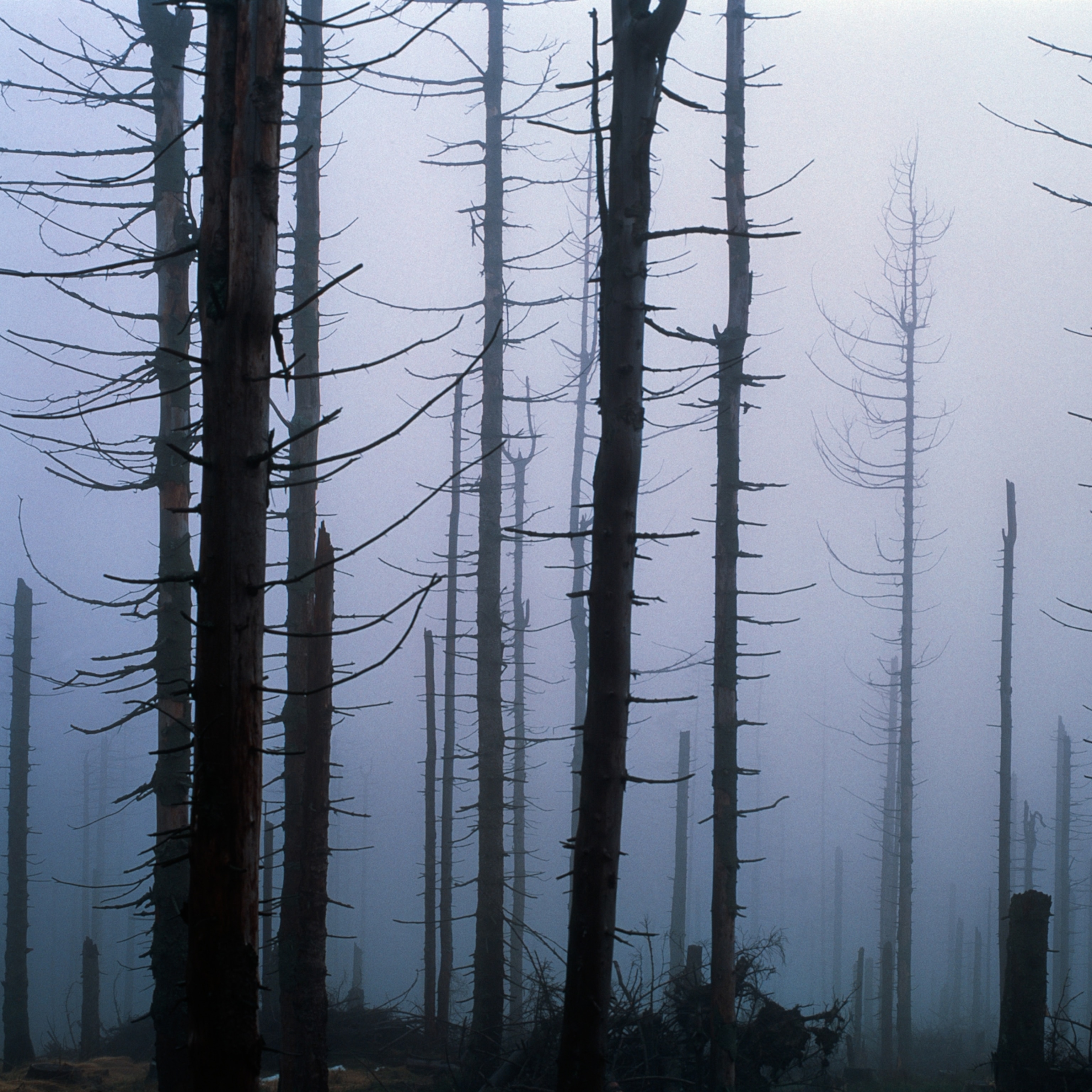
Urban Ski Slope to Raise Profile of Europe's Waste-to-Energy Drive
The Amager Bakke incinerator project under construction in Copenhagen, Denmark, is the flashiest example of Europe's effort to deploy waste-to-energy technology to cut carbon emissions.
Copenhagen, with a waterfront already famous for bike lanes, pedestrian walkways, and offshore wind turbines, is adding another clean energy feature to its urban landscape: a ski resort.
Perhaps the man-made slope will never rival the summits of Sweden or the Alps, where residents of Denmark's capital city typically travel to ski. But it will draw attention to Copenhagen's world-leading effort to cut fossil energy and waste. The ski slope will rest atop a $389 million (500 million euro), 60-megawatt power station fueled entirely by the city's garbage. (See related: "Quiz: What You Don't Know About Electricity.")

The Amager Bakke incinerator, now under construction, will contribute to Copenhagen's ambitious goal of becoming carbon-neutral by 2025. When finished in 2017, it will produce heat for 160,000 households and electricity for 62,500 residences. It is perhaps the flashiest example yet of Europe's effort to deploy cutting-edge waste-to-energy technology in the effort to cut greenhouse gas emissions. While some critics in Europe's green movement question the environmental benefits, and cost also can be an obstacle, cities like Copenhagen are convinced that producing megawatts is better than piling trash in landfills. (See related story: "On Mount Everest, Seeking Biogas Energy in a Mountain of Waste.")
Turning Trash to Treasure
The move toward waste-to-energy (WTE) plants was kick-started in 1999, with a European Union directive requiring member states to greatly reduce the amount of garbage going to landfills. As of 2010 (the most current year for which statistics are available), there were 451 WTE facilities in Europe, up from 390 in 2001, according to the Confederation of European Waste-to-Energy Plants (CEWEP). The plants annually incinerate 73 million metric tons of waste, producing 44 million megawatt-hours (MWH) of electricity and 61 million MWH of heat, or enough power to keep 13 million people wired and another 13 million warm. (See related story: "Waste Wattage: Cities Aim to Flush Heat Energy Out of Sewers.")
And more waste-to-energy projects are starting up, or are on the way. One market research firm says the EU's tightening standards on waste are a key driver behind world growth in WTE that it says will accelerate in the next five years, with 250 new plants and installed capacity on track to increase 21 percent by 2016. Ireland, which opened its first WTE plant in County Meath in 2011, is already expanding its capacity and more proposals are being debated. Several projects recently have been approved in the United Kingdom, including a modernistic WTE facility in the countryside between York and Harrowgate. It's not clear, though, if the Allerton Park energy recovery park will go forward, since the government withdrew £65 million in waste infrastructure credits for the controversial project earlier this year. (See related story: "Whisky a Go Go: Can Scotland's Distillery Waste Boost Biofuels? ")
In Copenhagen, the Amager Bakke plant also saw its share of controversy. Back in late 2011, city officials initially rejected the slick-looking, slope-topped facility—the design of hot Danish architect Bjarke Ingels—because of concerns that it wasn't environmentally friendly enough. But the utility, Amager Resource Center (ARC), overcame those objections. A key was the improvement compared to the existing 40-year-old waste-to-energy (WTE) plant that housed two generators, one that produced 20 MW and another that generated 9 MW. (See related story: "Can Nuclear Waste Spark an Energy Solution?")
While the new plant will increase carbon-dioxide emissions by 43 percent—from 140,000 tons a year to 200,000 tons—ARC says new technologies will make the plant 25 percent more efficient than the old one. In other words, it says, 3 kilos of incinerated waste will keep a light bulb burning for five hours instead of four. "It's not about size, it's about how you use it," said ARC spokeswoman Signe Josephsen. (See related story: "While Energy Policy Falters, Plastic Bag Laws Multiply.")
The burning of trash for power is hardly a new technology, but the current state-of-the-art plants—which use the heat created from the garbage inferno to make steam for heat or to run turbines for electricity—use expensive filters that scrub the flue gases to greatly reduce the amount of dangerous pollutants, such as dioxins, that are emitted. Because about half of the CO2 emitted is from biowaste, not fossil fuels, proponents say the plants are partly powered by renewable fuel, making them cleaner than fossil-fuel plants.
But the main argument in favor of WTE plants is that if the tons of trash that they burn had instead been buried in landfills, the decomposition would have led to greater atmospheric harm through the release of methane, a greenhouse gas that is 25 times more potent than CO2 as a heat-trapping gas. According to the U.S. Environmental Protection Agency, greenhouse gas emissions from landfills are two to six times higher than those generated from plants that burn waste, when measured per unit of electricity generated. Moreover, metals that would have been buried are instead easily plucked from the ashes and recycled. That's one big reason why in April the Center for American Progress (CAP), a progressive think tank based in Washington, D.C., issued a report urging the United States to build more WTE plants to help cut the nation's greenhouse gas emissions. (There are currently just 26 in the United States, which has 56 times the population of Denmark, where there are 30 operating WTE facilities.) (See related interactive map: "The Global Electricity Mix.")
The Environmental Debate
Not everyone, however, thinks incinerators are such a hot idea. Nearby communities often fear air pollution from smokestacks and traffic impacts from trash hauling to the facilities. Some green groups, including Brussels-based Friends of the Earth Europe (FOEE), fear that burning trash for power stunts efforts to encourage recycling. "The only way to reduce CO2 emissions when it comes to waste policy is by preventing, reusing, and recycling," said Ariadna Rodrigo, a FOEE resource use campaigner.
But WTE proponents argue that extracting power from waste goes hand-in-hand with recycling efforts. "There does not have to be a choice between the two solutions. We're very much into recycling," said Rasmus Meyer, also of ARC. Moreover, CEWEP claims, 100 percent recycling is not possible. Some materials degrade after repeated recycling, some are too filthy (diapers, vacuum cleaner bags), some are too mixed to be sorted, and there's no demand for some recycled products.
And, to be sure, countries that are the biggest users of waste power tend to have very impressive recycling rates, too. Germany produces more waste power than any European country—a total of 26 MWH in 2010—and it recycles 62 percent of its municipal solid waste, while incinerating 37 percent of it. Denmark, meanwhile, recycles 43 percent of its rubbish and burns 54 percent of it. Across the EU, on average, 40 percent of urban refuse is recycled and 23 percent is used for energy. Meanwhile, the U.S. manages to recycle just 23 percent of its garbage. Nevertheless, Rodrigo insists, incineration still places inherent limits on recycling, because once a plant is built it has to operate for 20 to 30 years to recoup its investment. "And you still have to feed that monster."
The dash for trash-power has also resulted in a thriving pan-European import-export market for rubbish. "Waste is a commodity, and there's a well-functioning waste market in Europe today," said Pål Spillum, head of the waste recovery and hazardous waste section of the Norwegian Environment Agency. Norway, particularly its capital city Oslo, was spotlighted earlier this year when Britain's Guardian newspaper and the New York Times both ran stories about how it was shipping in trash from Britain, Ireland and Sweden to help power its WTE plants.
Several other countries, particularly Germany, import even more rubbish than Norway.The size of this market, however, is hard to determine. The import and export of nonhazardous waste doesn't have to be reported, so the European Environmental Agency has no statistics available. Spillum maintains that Norway, which burned 1.3 million tons of refuse for energy in 2011, exports more waste than it imports. In 2011, it imported about 90,000 tons of nonhazardous waste, but it exported 1.7 million tons. Overall, Norway has 17 WTE plants. The two in Oslo burn about 410,000 tons of waste a year, and provide 840 GWh of heat—enough to heat 30 percent of the city's 300,000 households and to provide an additional 160 GWh of electricity. (See related story: "A Fuel That Doesn't Go to Waste.")
Measuring Costs
Does all that shipping of garbage, and the resulting CO2 emissions from transportation, undercut the green edge that WTE plants have over landfills? A 2011 study by Swedish consulting firm Profu looked at six Northern European countries-Norway, Denmark, Sweden, Germany, the Netherlands, and Belgium-that were big consumers of rubbish from Eastern Europe. It concluded that WTE was still a net benefit for the atmosphere; each metric ton of municipal waste burned for energy prevented the emission from landfills of more than 600 kilograms of CO2 equivalent.
One possible drawback, in the United States at least, could be high construction costs. Harrisburg, Pennsylvania, was driven to the brink of bankruptcy over a $345 million debt largely racked up by the costs of overhauling and expanding a power-generating incinerator. But the CAP study says that, by and large, WTE plants in the United States, which could cost between $100 million to $300 million to build, depending on size, should be able to recoup building costs from fees and from the sale of power to the grid, as well as from the sale of recovered recyclable metals.
Meanwhile, back in Denmark, the Amager Bakke incinerator—at 80 meters (260 feet), it will be one of the tallest buildings in Copenhagen—aims to stand as an example of WTE potential. Another unique feature of the Amager Bakke incinerator and ski slope—if the technology's ready—will be a smokestack that belches out a giant smoke ring each time a ton of carbon dioxide is emitted. "It's a way to demonstrate to the people of Copenhagen that they are responsible for the environment," ARC's Meyer says. And if too many Copenhageners pay heed to the 200,000 smoke rings wafting over their city each year and deeply cut back on their waste streams? Well, there's still plenty of Eastern European garbage available to keep the fires beneath Amager Bakke's snow-covered slope fully stoked.
This story is part of a special series that explores energy issues. For more, visit The Great Energy Challenge.








